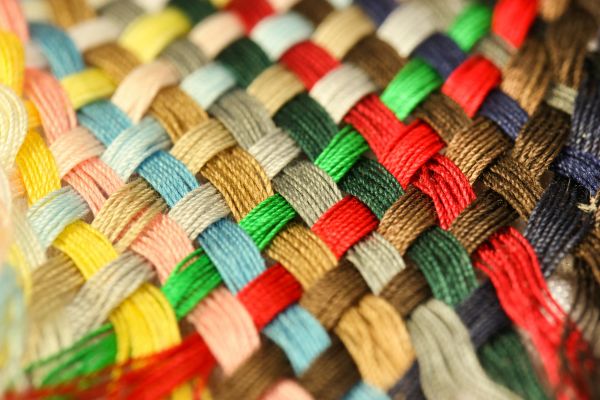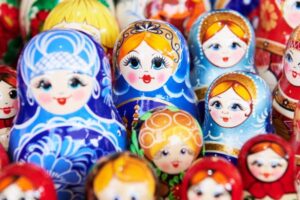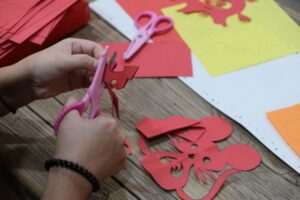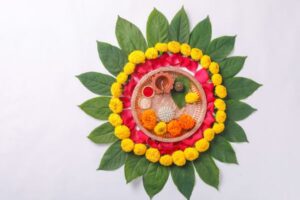Weaving holds a deep-rooted significance in the cultural fabric of Native American communities. For centuries, indigenous peoples across the Americas have employed weaving techniques to create functional and intricate textiles. From Navajo rugs to Pueblo pottery designs, weaving is not only a practical craft but also a symbol of cultural identity and artistic expression. In this article, we will explore the rich heritage of weaving in Native American cultures, its historical roots, diverse techniques, symbolic motifs, and its enduring significance in preserving traditions and fostering community.
1: An Ancient Tradition: Weaving in Native American History
1.1 Pre-Columbian Origins: The Ancestral Roots of Native American Weaving
Weaving predates the arrival of European settlers, with evidence of intricate textiles dating back thousands of years. Native American tribes developed sophisticated weaving techniques and utilized natural materials such as plant fibers, animal fibers, and feathers to create textiles that were both functional and aesthetically pleasing.
1.2 The Cultural Significance of Weaving: Stories Woven into Textiles
Weaving holds deep cultural significance for Native American communities. Textiles often contain symbolic motifs and patterns that convey stories, spiritual beliefs, and tribal histories. The process of weaving itself is seen as a meditative and spiritual act, connecting weavers to their ancestors and the natural world.
1.3 Colonial Influences and Adaptations: Weaving in the Face of Change
With the arrival of European colonizers, Native American weaving faced significant challenges. New materials, such as wool from introduced livestock, were incorporated into traditional techniques, leading to the evolution of weaving practices. Native American weavers adapted their skills to cater to changing markets, showcasing their resilience and creativity in the face of cultural upheaval.
2: Techniques and Styles of Native American Weaving
2.1 The Navajo Tradition: Masterpieces of Textile Artistry
Navajo weaving stands as a pinnacle of Native American textile artistry. Renowned for their vibrant colors and intricate designs, Navajo rugs and blankets are crafted using a tapestry weaving technique. Skilled weavers employ a vertical loom and carefully hand-dye the wool to create bold geometric patterns that reflect their cultural heritage.
2.2 Pueblo Weaving: A Celebration of Tradition and Craftsmanship
Pueblo communities, including the Hopi and Zuni tribes, have a rich tradition of weaving that encompasses both functional and ceremonial textiles. Pueblo weavers employ backstrap looms and employ intricate techniques like the twill weave and raised designs. Their weavings often feature symbolic elements, such as rainbows, kivas, and sacred animals, which reflect their spiritual beliefs and daily lives.
2.3 The Basketry Tradition: Functional Artistry and Cultural Significance
Basketry holds a prominent place in Native American weaving traditions. Native American tribes across different regions, such as the Miwok, Cherokee, and Tlingit, have developed unique basket weaving techniques. Baskets serve both practical and ceremonial purposes, representing skills passed down through generations and embodying the close relationship between indigenous peoples and the natural world.
3: Symbolism and Stories Woven in Textiles
3.1 Sacred Geometry: Exploring Symbolic Motifs
Native American textiles are often adorned with geometric patterns that hold deep symbolic meaning. Circles, triangles, and diamonds represent elements of nature, celestial bodies, and the interconnectedness of all things. These motifs serve as visual storytelling, preserving cultural narratives and ancestral wisdom within the weavings.
3.2 Spirituality and Beliefs: Woven Prayers and Blessings
Weaving is intertwined with spirituality in Native American cultures. Weavers infuse their textiles with prayers, blessings, and intentions, believing that the process and finished pieces carry sacred energy. Textiles are used in ceremonial contexts, where they serve as offerings, protective garments, and conduits for connecting with the spiritual realm.
3.3 Ancestral Connections: Honoring Lineage and Heritage
Native American weavers maintain a strong connection to their ancestral lineage through their craft. They carry the knowledge and traditions passed down through generations, infusing their weavings with the essence of their ancestors. Weaving becomes a way to honor and preserve the cultural heritage of their tribes, ensuring that their traditions continue to thrive.
4: Weaving as Community and Cultural Preservation
4.1 Passing Down Traditions: Intergenerational Learning and Mentorship
Weaving is a communal activity that fosters intergenerational learning. Elders pass down their weaving knowledge to younger generations, ensuring the continuity of cultural traditions. Through the mentorship of experienced weavers, skills, techniques, and cultural values are preserved and celebrated.
4.2 Weaving Cooperatives and Economic Empowerment
Weaving cooperatives have emerged as important community-driven initiatives that support Native American weavers and their craft. These cooperatives provide a platform for artisans to showcase and sell their work, ensuring fair compensation and empowering individuals to sustain their weaving practices as a viable livelihood.
4.3 Cultural Revival and Healing: Weaving as a Source of Resilience
In recent years, there has been a resurgence of interest in Native American weaving as a means of cultural revival and healing. Weaving serves as a source of resilience, allowing communities to reclaim their cultural heritage, assert their identity, and address the historical trauma experienced by indigenous peoples.
5: Weaving Materials and Tools in Native American Traditions
5.1 Natural Fibers: Embracing the Gifts of Nature
Native American weavers utilize a variety of natural fibers in their craft, including cotton, yucca, hemp, and nettle. These fibers are carefully harvested, processed, and transformed into threads or cords, which form the foundation for weaving intricate patterns and designs.
5.2 Dyes and Pigments: Infusing Colors with Significance
The art of dyeing plays a crucial role in Native American weaving traditions. Natural dyes sourced from plants, minerals, and insects are used to create a vibrant palette of colors. Each dye holds symbolic meaning, and the process of dyeing itself often involves ceremonial practices that connect the weaver to the natural world.
6: Regional Variations in Native American Weaving
6.1 Chilkat Weaving: A Majestic Tradition of the Northwest Coast
Chilkat weaving is a highly esteemed form of weaving practiced by tribes of the Northwest Coast, such as the Tlingit, Haida, and Tsimshian. It involves complex techniques, including the use of twine made from cedar bark, to create ceremonial blankets adorned with intricate designs representing clan crests and mythological figures.
6.2 Hopi Overlay Weaving: Layers of Artistry
The Hopi people of Arizona are renowned for their unique overlay weaving technique. This method involves weaving two layers of fabric together, with the lower layer serving as the background and the upper layer showcasing intricate designs. The resulting textiles possess a three-dimensional quality and are often used in ceremonial and symbolic contexts.
7: Weaving Revitalization and Cultural Preservation Efforts
7.1 Weaving Schools and Workshops: Educating Future Generations
To ensure the continuity of Native American weaving traditions, weaving schools and workshops have emerged as important institutions. These educational programs provide comprehensive training in traditional weaving techniques, fostering a new generation of skilled weavers and preserving cultural knowledge.
7.2 Cultural Centers and Museums: Showcasing Weaving Heritage
Native American cultural centers and museums play a vital role in preserving and promoting the art of weaving. They serve as repositories of historical textiles, showcase contemporary works, and offer exhibitions and educational programs that highlight the cultural significance of weaving in Native American communities.
8: The Symbolic Language of Native American Weaving
8.1 Sacred Geometry and Patterns: Connecting to the Spiritual Realm
Native American weaving is replete with symbolic patterns and motifs that hold deep spiritual significance. These sacred geometrical designs, such as the stepped diamonds, feathers, and lightning bolts, reflect the interconnectedness of the natural world and the spiritual realm. Weavers use these symbols to communicate with the divine, seek protection, and honor their cultural heritage.
9: Economic and Social Impacts of Native American Weaving
9.1 Economic Empowerment: Sustaining Livelihoods through Weaving
For many Native American communities, weaving is not only an artistic expression but also a source of economic empowerment. The creation and sale of woven textiles provide a livelihood for skilled weavers, supporting their families and contributing to the economic well-being of their communities. Through the promotion and fair trade of Native American textiles, we can support sustainable economic growth and cultural preservation.
9.2 Cultural Tourism: Showcasing Weaving Traditions to the World
Native American weaving traditions have become an integral part of cultural tourism. Visitors are drawn to museums, festivals, and cultural centers to learn about the history, techniques, and symbolism behind these exquisite textiles. By embracing cultural tourism, Native American communities have the opportunity to share their rich weaving traditions with the world, raising awareness and appreciation for their cultural heritage.
10: Contemporary Innovations in Native American Weaving
10.1 Revitalizing Traditional Techniques: Contemporary Adaptations
In recent years, there has been a resurgence of interest in Native American weaving, leading to innovative approaches that blend tradition with contemporary influences. Weavers are experimenting with new materials, incorporating modern designs, and exploring alternative forms of expression while still honoring the foundational techniques and cultural significance of their craft.
Conclusion
The art of weaving is deeply woven into the cultural tapestry of Native American communities. It is a testament to their rich history, spiritual beliefs, and artistic expression. From the ancient traditions passed down through generations to the contemporary innovations that push boundaries, Native American weaving continues to thrive and evolve. As we admire the intricate designs, vibrant colors, and symbolic motifs of these textiles, let us recognize and honor the profound contributions of Native American weavers. May their weaving traditions continue to be cherished, preserved, and celebrated for generations to come, serving as a testament to the resilience, creativity, and cultural legacy of indigenous peoples.



